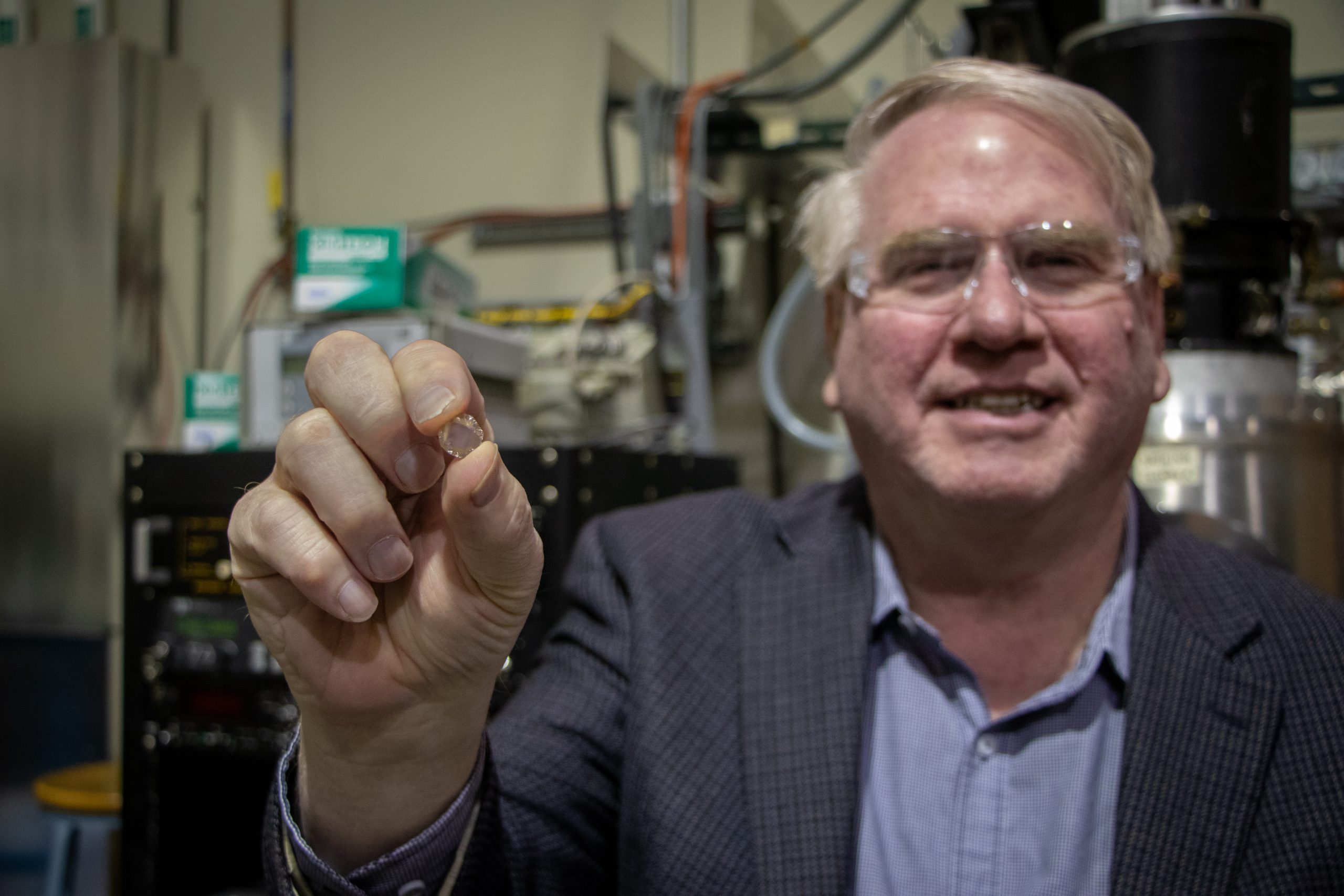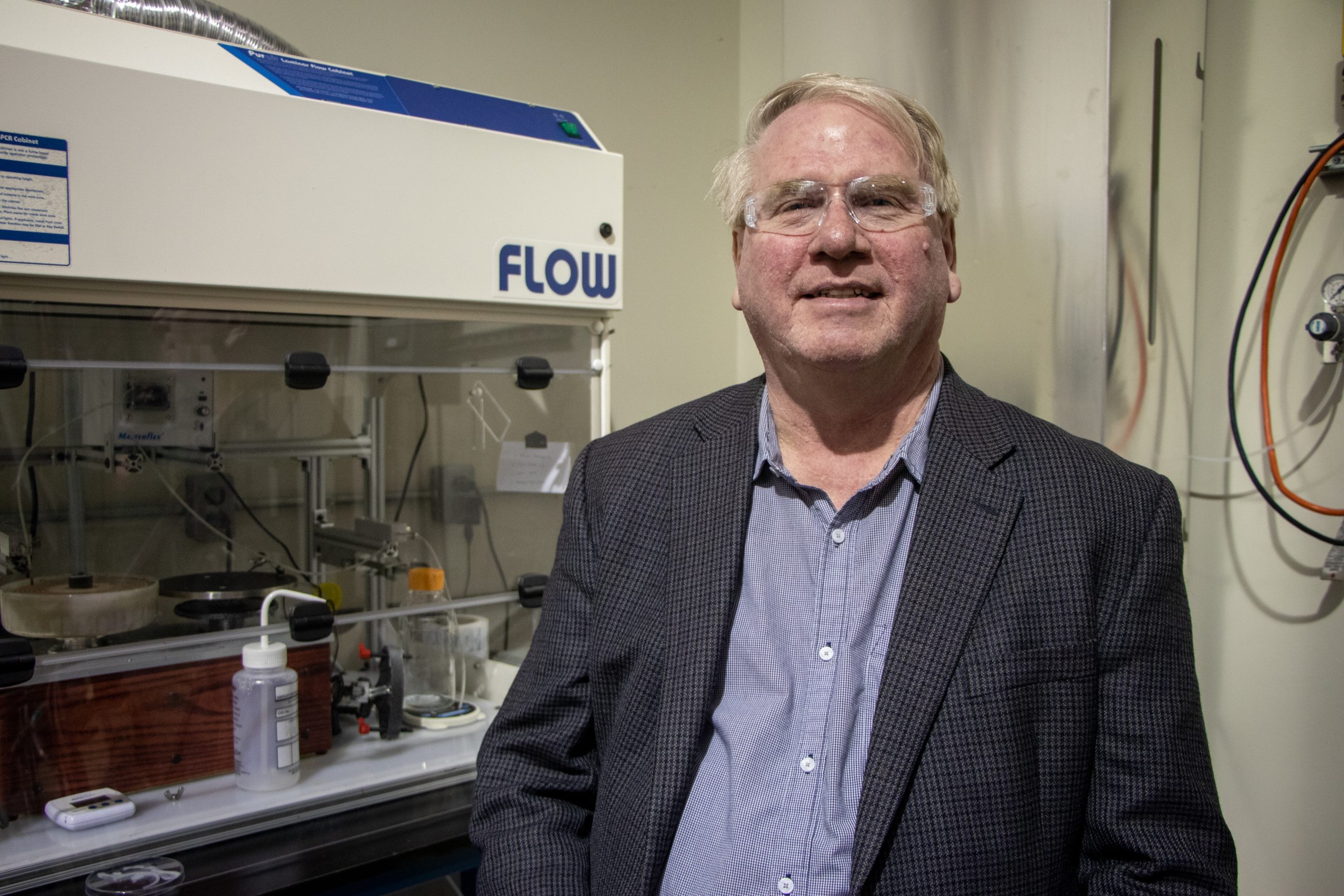Michigan State University’s Timothy Grotjohn, a professor in the Department of Electrical and Computer Engineering, has been elected as a Fellow of the National Academy of Inventors (NAI) for its 2023 class for his work on diamond process and device research and development. This prestigious recognition honors Grotjohn’s contributions to the field of diamond synthesis and his dedication to advancing the technology through commercialization of his numerous patents.

From the MSU College of Engineering Dean Leo Kempel: “I commend Tim for this honor and his dedication to MSU for nearly 40 years. His experience in diamond coatings and technologies has strengthened our collaborative efforts with industry partners and transformed possibilities. His efforts will continue to empower Spartan Engineers to excel in the jobs of tomorrow as we forge ahead with plans to expand our footprint and impact on campus and beyond.”
Grotjohn, who has been at MSU for over 37 years, has spent the better part of three decades working on plasma-assisted materials processes, with a particular focus on growing diamonds for high-tech applications. In that time, he has published 70 journal papers and over 250 conference papers, receiving 14 patents in the process. His research has led to several significant innovations in the field, including the development of feedback control mechanisms to improve the diamond growth process.
“It’s nice to be recognized,” Grotjohn remarked on being named an NAI Fellow. “For me, it’s nice to see if all of this technology can spin out into a commercial entity.”
When asked about the importance of his kind of diamond research, Grotjohn said, “Right now, a lot of the electronics is all silicon and computer chips. But as you move into cell phones, it’s gallium arsenide. In big cell phone towers, it’s gallium nitride. All different semiconductor materials. And if you look at those materials, the next generation of them is diamond which has better properties than all of those others. So, the applications for diamond would be things like space electronics, very high power, high voltage electronics like those within the electrical grid. The idea is to replace the transformers you see with power electronics, so it’s a much smaller, more agile system.”

One of Grotjohn’s most notable achievements is his work on creating larger single-crystal diamond wafers, a project he is currently pursuing in collaboration with MSU and his co-founded company, Great Lakes Crystal Technologies.
Currently, the size of single-crystal diamonds is limited to about half an inch. Grotjohn’s team, however, is working to push the boundaries by developing two-inch diamond wafers, with the ultimate goal of achieving four-inch wafers, as “then you can actually process diamond wafers through the normal semiconductor, micro-electronic fabrication machines. And then you could really start to see a lot of applications of diamonds in electronics.” He noted.
Grotjohn’s career has been driven by his passion for change and a desire to improve existing processes. “It’s always about trying to improve something or do it a different way, how to create a process that’ll be faster or more pure or whatever. So, I think that’s interesting to me, having that challenge there, asking ourselves, ‘How can we do this better?'” he explained.
According to Doug Gage, the university’s vice president for Research and Innovation, “Grotjohn’s work has not only advanced the field of diamond synthesis but has also contributed to Michigan State University’s reputation as an innovator and inventor university. His election as an NAI Fellow is one of the ways the impact of his research and his contributions to the scientific community is finally being recognized.”

Grotjohn says he wishes to stay committed to pushing the boundaries of diamond technology and exploring new avenues for its applications. “There’s a whole list of companies looking at using diamonds for the applications I’ve talked about, both in electronics and in some of these sensor applications. Diamond is a big effort here on campus.”
About the MSU Innovation Center:
The MSU Innovation Center is dedicated to fostering innovation, research commercialization, and entrepreneurial activities from the research and discovery happening across our campus every day. We act as the primary interface for researchers aiming to see their research applied to solving real-world problems and making the world a better place to live. We aim to empower faculty, researchers, and students within our community of scholars by providing them with the knowledge, skills, and opportunities to bring their discoveries to the forefront. Through strategic collaborations with the private sector, we aim to amplify the impact of faculty research and drive economic growth while positively impacting society. We foster mutually beneficial, long-term relationships with the private sector through corporate-sponsored research collaborations, technology licensing discussions, and support for faculty entrepreneurs to support the establishment of startup companies.
Is your company interested getting support from MSU’s vast team of innovative and multifaceted engineers? Click Here.
